Hello World…May I have a moment please?
Three of my poetry books are now published on the Kindle through
Amazon. Journey Of The Soul..Above The Rain and Conscious
Revelation. If you do not have a kindle device, you can download the
kindle device to your PC, free of charge, a gift from Amazon. After
downloading the device, you can purchase my books and begin
your kindle library.
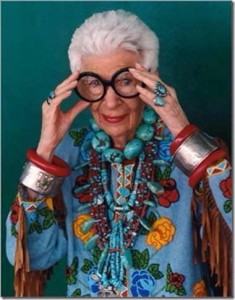
IRIS ATFEL
At an age when when most people would be long retired (she’s nearly 93!), the unstoppable force that is Iris can’t be contained. The self-proclaimed “geriatric starlet” became known most recently for her one-of-kind, muse-worthy style—so lauded that the Costume Institute at New York’s Metropolitan Museum of Art celebrated it in the 2005 exhibition “Rara Avis.” Since then, Iris has become synonymous with the world of fashion.
But beyond haute couture, Iris was a decorator and textile designer for the better part of her career. In 1950 she and her husband, Carl, opened Old World Weavers, a textile firm they ran until 1992, servicing everyone from Emily Post to Dorothy Draper. Iris also was responsible for many White House restorations, including those of the Truman, Kennedy, and Clinton administrations.
Ever curious, she globe-trotted her way through life, living from one experience to the next, and obsessively collecting along the way. As she told us, “My travels were fairly extensive. I feel very grateful I had the unusual opportunity of seeing the end of the Old World.”
Even if you don’t know who she is, or just know her as “that lady with the glasses,” chances are she’s caught your attention and you want to learn more. In preparation for our sale, we spent a lot of time with the doyenne—poring through her warehouse and sitting down for the video interview at our studio (above). Here we share some amazing sound bites from the witty and irreverent personality that is Iris Apfel.
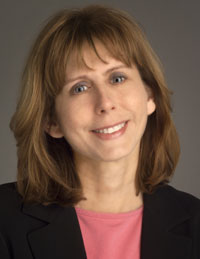
REGINA BRETT
This is something we should all read at least once a week!!!!! Make sure you read to the end!!!!!!
Written by Regina Brett, 90 years old, of the Plain Dealer, Cleveland , Ohio .
“To celebrate growing older, I once wrote the 42 lessons life taught me. It is the most requested column I’ve ever written.
My odometer rolled over to 90 in August, so here is the column once more:
1. Life isn’t fair, but it’s still good.
2. When in doubt, just take the next small step.
3. Life is too short – enjoy it..
4. Your job won’t take care of you when you are sick. Your friends and family will.
5. Pay off your credit cards every month.
6. You don’t have to win every argument. Stay true to yourself.
7. Cry with someone. It’s more healing than crying alone.
8. Save for retirement starting with your first pay check.
9. When it comes to chocolate, resistance is futile.
10. Make peace with your past so it won’t screw up the present.
11. It’s OK to let your children see you cry.
12. Don’t compare your life to others. You have no idea what their journey is all about.
13. If a relationship has to be a secret, you shouldn’t be in it…
14 Take a deep breath. It calms the mind.
15. Get rid of anything that isn’t useful. Clutter weighs you down in many ways.
16. Whatever doesn’t kill you really does make you stronger.
17. It’s never too late to be happy. But it’s all up to you and no one else.
18. When it comes to going after what you love in life, don’t take no for an answer.
19. Burn the candles, use the nice sheets, wear the fancy lingerie. Don’t save it for a special occasion. Today is special.
20. Over prepare, then go with the flow.
21. Be eccentric now. Don’t wait for old age to wear purple.
22. The most important sex organ is the brain.
23. No one is in charge of your happiness but you.
24. Frame every so-called disaster with these words ‘In five years, will this matter?’
25. Always choose life.
26. Forgive but don’t forget.
27. What other people think of you is none of your business.
28. Time heals almost everything. Give time time.
29. However good or bad a situation is, it will change.
30. Don’t take yourself so seriously. No one else does..
31. Believe in miracles.
32. Don’t audit life. Show up and make the most of it now.
33. Growing old beats the alternative — dying young.
34. Your children get only one childhood.
35. All that truly matters in the end is that you loved.
36. Get outside every day. Miracles are waiting everywhere.
37. If we all threw our problems in a pile and saw everyone else’s, we’d grab ours back.
38. Envy is a waste of time. Accept what you already have not what you need.
39. The best is yet to come…
40. No matter how you feel, get up, dress up and show up.
41. Yield.
42. Life isn’t tied with a bow, but it’s still a gift.”
Its estimated 93% won’t forward this. If you are one of the 7% who will, forward this with the title ‘7%’.
.
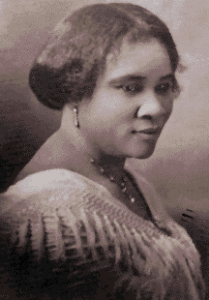
“There is no royal, flower-strewn path to success. And if there is, I have not found it; for if I have accomplished anything in life, it is because I have been willing to work hard.”
“I got my start by giving myself a start.”
“This is the greatest country under the sun. But, we must not let our love of country, our patriotic loyalty, to cause us to abate one whit in our protest against wrong and injustice.”
– Madam C.J. Walker
Madam C.J. Walker
Madam C.J. Walker was an inventor, businesswoman, philanthropist, and a social activist who made her fortune by developing and marketing a hugely successful line of beauty and hair products for black women. The Guinness Book of Records cites Walker as the first female, black or white, who became a millionaire by her own achievements.
Born Sarah Breedlove on December 23, 1867 on a Delta, Louisiana plantation (birthplace shown here), this daughter of former slaves transformed herself from an uneducated farm laborer and laundress into of the twentieth century’s most successful, self-made women entrepreneur.
she got her start … by giving herself a start
Orphaned at age seven, she often said, “I got my start by giving myself a start.” She and her older sister, Louvenia, survived by working in the cotton fields of Delta and nearby Vicksburg, Mississippi. At 14, she married Moses McWilliams to escape abuse from her cruel brother-in-law, Jesse Powell.
Her only daughter, Lelia (later known as A’Lelia Walker) was born on June 6, 1885. When her husband died two years later, she moved to St. Louis to join her four brothers who had established themselves as barbers. Working for as little as $1.50 a day, she managed to save enough money to educate her daughter. Friendships with other black women who were members of St. Paul A.M.E. Church and the National Association of Colored Women exposed her to a new way of viewing the world.
necessity is the mother of her invention
Like many women of that era, Sarah washed her hair only once a month. As a result, she suffered from severe dandruff and a scalp disease that caused her to lose most of her hair. In 1905, she moved to Denver where she worked as a sales agent for Annie Malone, a black woman entrepreneur who manufactured hair care products. Sarah consulted with a Denver pharmacist who analyzed Malone’s formula and helped Sarah formulate her own products.
While in Denver, Sarah married her third husband, Charles Joseph Walker, a St. Louis newspaperman. After changing her name to “Madam” C. J. Walker, she founded her own business and began selling Madam Walker’s Wonderful Hair Grower door to door. The elements of the “Walker System” were a shampoo, a pomade “hair-grower,” vigorous brushing, and the application of heated hair combs. The method transformed stubborn, lusterless hair into shining smoothness. Madam Walker, by the way, did not invent the straightening comb, though many people incorrectly believe that to be true.
marketing genius travels extensively
to promote her product
To promote her products, the new “Madam C.J. Walker” traveled for a year and a half on a dizzying crusade throughout the heavily black South and Southeast, selling her products door to door, demonstrating her scalp treatments in churches and lodges, and devising sales and marketing strategies.
In 1908, Madam Walker created a college for her future employees. They were trained in the art of hair styling. Leila College, run by Madam Walker’s daughter,A’Lelia, taught their students what became known as the Walker Method. After their schooling, most of the graduates were employed by Walker herself. She and her company employed over 3,000 people at one point.
By early 1910, she had settled in Indianapolis, then the nation’s largest inland manufacturing center, where she built a factory, hair and manicure salon and another training school. In 1913, while Walker traveled to Central America and the Caribbean to expand her business, her daughter A’Lelia, moved into a fabulous new Harlem townhouse and Walker Salon, designed by black architect, Vertner Tandy. “There is nothing to equal it,” she wrote to her attorney, F.B. Ransom. “Not even on Fifth Avenue.”
the madam becomes a famous promoter
of her products, hard work & social justice
Walker herself moved to New York in 1916, leaving the day-to-day operations of the Madam C. J. Walker Manufacturing Company in Indianapolis to Ransom and Alice Kelly, her factory forelady and a former school teacher. Although she continued to oversee the business and to run the New York office, once in Harlem, Madam Walker quickly became involved in Harlem’s social and political life, taking special interest in the NAACP’s anti-lynching movement to which she contributed $5,000.
Walker made most of her fortune between 1911 and 1917, making Madam C.J. Walker the first African American woman to become a millionaire. The fame received by this hard work gave her the inspiration to promote her product in lectures, which in turn helped other black women start their own businesses. Like many famous African Americans of the time, Madam Walker was an inspirational speaker, preaching hard work and determination through struggles.
Madam Walker had a mansion called “Villa Lewaro” built in the wealthy New York suburb of Irvington on Hudson, New York, near the estates of John D. Rockefeller and Jay Gould. The Italianate villa was designed by architect Vertner Tandy, the first registered black architect in the state of New York. She also owned townhouses in Indianapolis and New York.
In July 1917, when a white mob murdered more than three dozen blacks in East St. Louis, Illinois, Walker joined a group of Harlem leaders who visited the White House to present a petition favoring federal anti-lynching legislation.
As her business continued to grow, Walker organized her agents into local and state clubs. Her Madam C. J. Walker Hair Culturists Union of America convention in Philadelphia in 1917 must have been one of the first national meetings of businesswomen in the country. Walker used the gathering not only to reward her agents for their business success, but to encourage their political activism as well. As she put it,
“This is the greatest country under the sun.But we must not let our love of country, our patriotic loyalty cause us to abate one whit in our protest against wrong and injustice. We should protest until the American sense of justice is so aroused that such affairs as the East St. Louis riot be forever impossible.”
Warned by physicians that her hypertension required a reduction of her activities, Madame Walker nevertheless continued her busy schedule. She died at age 52 in 1919 at her estate. Included in Madame C.J. Walker’s will was a provision that women would always head the company she founded.
madam’s GREATEST legacy:
BOOSTING THE self-confidence of black women
No single accomplishment or personal trait captures the essence of Madam C. J. Walker’s legacy. Rather, her life is best summed up as being a . . .
Pioneering entrepreneur. Madam C.J. Walker was clearly a pioneer of the modern cosmetics industry. Tenacity and perseverance, faith in herself and in God, quality products and “honest business dealings” were the elements and strategies she prescribed for aspiring entrepreneurs who requested the secret to her rags-to-riches ascent. Along the way, she provided educational opportunities and lucrative incomes for thousands of African American women who otherwise would have been consigned to jobs as farm laborers, washerwomen and maids.
Pioneering philanthropist. Madam Walker was also a pioneering philanthropist, initiating the philosophy of charitable giving in the black community with her unprecedented contributions to the YMCA, the NAACP, the Tuskegee Institute, and Bethune-Cookman College.
Pioneering social activist. And, as a pioneering political activist, Madam C.J. Walker organized her sales agents to use their economic clout to protest lynching and racial injustice.
Pioneering creator of a self-confident beauty culture for black women – her greatest legacy. She made it her goal to create a safe and comfortable place in which black women could be “pampered,” believing that this kind of attention would boost their self-confidence and alleviate the daily stress that black women suffered from. In addition to feeling physical beauty, she wanted women to, “combine these qualities with a beautiful mind and soul.” As much as any woman of the twentieth century, Madam C.J. Walker paved the way for the profound social changes that altered women’s place in American society.
For your enjoyment, I have decided this is one beautiful way to be
able to share an abundance of my inspiration, my encouragement,
and my love of life with all of you at a very affordable low price.
After reading my books, I would so appreciate a few words from you
in a review on Amazon. On the purchase page beneath the books you
will see a review box. Please stop by and leave a word or two.
Thank you friends, I do appreciate all of you.
Melvina
Title: Sisters
By: Melvina Germain
You know when you conduct research about women in different parts of the world, it’s
heart breaking. That deep blanket of negativity covers you heavily and it’s difficult to find a place to be uplifted.
The only way for women to rise up all over the world is by joining together and forming that chain of love and demanding our right to be treated as people.
It’s time to empower ourselves . It can’t be done overnight, we start by teaching our young girls how powerful they are. We let them know that they are not the weaker sex, we let them know how crucial it is to get an education.
We teach them their body is a temple…Be kind when you talk to them about their bodies, Let them know that they are the chosen ones, they share the bringing of life into this world with God. Without them a man will not walk on this earth. If they decide not to bring children in the world, the world no longer becomes populated. They are the powerhouse for without women, there is no world.
When equality is present on the earth among both genders, then there will be balance. With balance, love will shine and the world will finally be in a place of harmony. This world is a mess at present due to the work of men and the only way peace will come is with the intervention of what women can bring forth.
Take a look at some very special women here, learn from them and become empowered to be the best you can be.
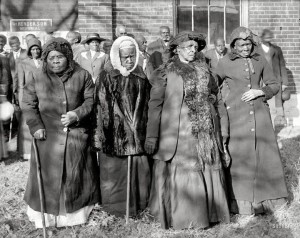
Black Sisters
Pictured from left to right: Annie Parram, age 104; Anna
Angales, age 105; Elizabeth Berkeley, 125; Sadie
Thompson, 110. These ladies are present at a slave
reunion in 1916, in Washington, D.C. They all lived to
a beautiful old age.
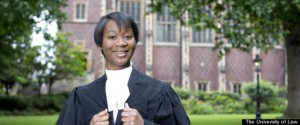
If you thought a 14-year-old set to graduate from Chicago State University with a degree in Psychology was an amazing feat, wait until you hear about this next teenager making history.
18-year-old Gabrielle Turnquest recently became the youngest person to pass the bar exam in the UK.
“I am honored to be the youngest person to pass the Bar exams but, really, I was not aware at the time what the average age was,” she told The Telegraph. “I didn’t fully realize the impact of it.”
The average age of a typical lawyer graduating from The University of Law’s Bar Professional Training Course is 27, according to The University of Law’s records.
The Windermere, Florida native is also eligible to be called to the Bahamas Bar, an opportunity that’s close to her heart due to her parents’ origin.
Ironically, Turnquest isn’t the only child in her family to pass the UK Bar exam. Her sister, Kandi, also took the same course and passed the bar at the age of 22.
Looking ahead to the future, the history making teen plans to attend the Fashion Institute of Design and Merchandising in the US to study Apparel Industry Management this Fall.
“Studying at the University of Law has broadened my horizons and introduced me to a global legal system that will help me in my future career in the international fashion industry” the teen said in a press release about her accomplishment.
This isn’t Gabrielle’s first time making history. The Florida teen was also the youngest to graduate with a degree from Liberty University in Virginia at the age of 16. Her ultimate goal is to build a career as a fashion law specialist.
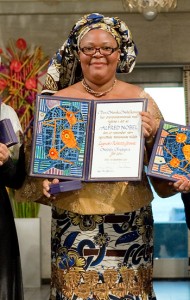
Leymah Gbowee
Leymah Gbowee, along with the women of Liberia, organized a peaceful movement which succeeded in bringing an end to a Civil War which had killed more than 250,000 people in 14 years. President Charles Taylor came to power after a bloody revolution which took place from 1980 until 1995. Soon after his election, Taylor began to support ethnic killings and embezzlement. This led to further conflict within the country, with the Second Liberian Civil War beginning in 1999, a war characterized by its brutality and the use of child soldiers.Born in central Liberia in 1972, Leymah quickly became involved in the violence which tore Liberia apart. She trained as a trauma counselor for girls and women raped by militia, also working in the troubled Democratic Republic of Congo. In 2002, Leymah organized the Women of Liberia Mass Action for Peace movement. They gathered women from many different backgrounds to pray and sing in public, demanding peace. Picketing, fasting and threatening a “sex strike,” the women risked their lives, protesting in the capital, to demand that Charles Taylor do something to end the conflict.After pressure from the women and international condemnation, the brutal president finally listened and Taylor flew to neutral Ghana for peace talks. The women followed him to Ghana to continue their efforts. Violence ended in 2003, with Taylor forced to resign and imprisoned by The Hague for crimes against humanity. Democratic elections in 2005 saw Ellen Johnson Sirleaf elected by the people as the first female head of state in an African nation. Leymah Gbowee was awarded the Nobel Peace Prize in 2011.
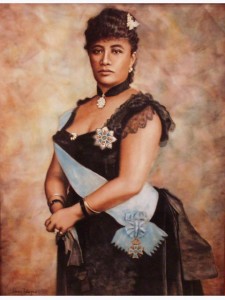
Queen Lili’uokalani
http://en.wikipedia.org/wiki/Liliuokalani
September 2, 1838 – November 11, 1917), born Lydia Lili’u Loloku Walania Wewehi Kamaka’eha, was the last monarch and only queen regnant of the Kingdom of Hawaii. She was also known as Lydia Kamaka’eha Paki, with the chosen royal name of Lili’uokalani, and her married name was Lydia K. Dominis.
In 1983, annexationists along with John L. Stevens—chief American diplomat in Hawaii—created a conspiracy to overthrow the Hawaiian government. Stevens allowed troops from the U.S.S Boston to occupy Honolulu. They arrested Queen Lili’uokalani who was against the annexation of Hawaii, and she surrendered.
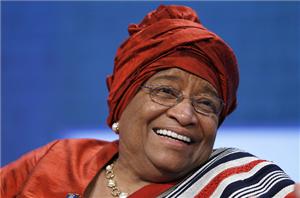
Mother Teresa
This is a lady I respect and love, she was born Aug. 26/1910 and closed the door to this earth Sept. 5/1997. She was a messenger of God, doing all that is good and standing so strong. She was a tiny woman in stature with unshakable faith. A soul filled with the love of Christ. Mother Teresa said she belonged to the world, and her love poured abundantly over all. She stood as one of the best role models in her love of God and taking that love and extending it to all around her, she took care of the poor with great compassion. Mother Teresa experienced her own internal darkness but was able to wade through that storm and begin her work of caring for the poor and continued to the end of her life.
Mother Teresa founded…The Missionaries of Charity, A Roman Catholic religious congregation. In 2012 it consisted of 4,500 sisters and is active in 133 countries. CAring for hospices and homes for people with HIV/AIDS, leprosy, tuberculosis, soup kitchens, children’s and family programes, orphanges and schools. Learn about Mother Teresa and embrace her strength, her compassion, her empathy and her profound love of humanity. We can start by volunteering our time in some way to aid in the help and
compassion for the poor, inspiration for the young and serve as the best role models we can be.

Lady Diana
Born Diana Spencer on July 1, 1961, Princess Diana became Lady Diana Spencer after her father inherited the title of Earl Spencer in 1975. She married heir to the British throne, Prince Charles, on July 29, 1981. They had two sons and later divorced in 1996. Diana died in a car crash after trying to escape the paparazzi in Paris on the night of August 30, 1997.
Lady Diana was a well liked Royal, the public wept in shock, yes many tears flowed mourning the death of Lady Diana. She was a great humanitarian and certainly a Blessing to all she came in contact with. A shy and very beautiful woman in beauty and heart, and this Royal shared her heart with the world. Lady Diana is a shining light in history and will never be forgotten.

MALALA YOUSAFZAI
Nobel Peace Prize nominee Malala Yousafzai was the young lady who was shot in the head for standing up for education for girls. The Taliban sought her out and shot her, it is said three times in the head. Malala survived and was able to recount with a friend or friends what had happened on that dreadful day. The Taliban attempted to assassinate her and even though at close range did not succeed. Malala, a very brave and very strong young lady lives to continue her crusade for the education of females. Malala is greatly supported by the people of Pakistan and the Taliban is feared as they are against women’s rights. Malala made a statement saying the Taliban had sullied Islam by linking it to terrorism.

ADA LOVELACE
Ada Lovelace was the worlds first computer programmer. She was an English mathematician and writer. She was known for her work on Charles Babbage’s early mechanical general purpose computer, the Analytical Engine. Her notes on the engine include what is recognized as the first algorithm intended to be processed by a machine. Due to this, Ada is described as the world’s first computer programmer.
In case you are wondering if she is related to Linda Lovelace, the answer is no. Linda Lovelace had quite an abusive life and now apparently there will be a movie about her. I haven’t heard of anything in the works for Ada Lovelace though…just saying…..
8 AFRICAN-AMERICAN WOMEN WHO CHANGED THE WORLD

1. SOJOURNER TRUTH (1797-1883)
Sojourner Truth“I hope that Sojourner Truth would be proud to see me, a descendant of slaves, serving as the First Lady of the United States of America.”– First Lady Michelle Obama
Sojourner Truth is considered one of the great abolitionists, activists, speakers, and thinkers of all time. Born into slavery in 1797, she possessed a gift for public speaking and spoke fervently about abolishing slavery and about the need for women’s rights.
After the Civil War, Sojourner Truth dedicated her time to helping former slaves transition to a life of freedom. Sojourner Truth fought tirelessly for the rights of African-Americans and women until the day she died in 1883.
In April of 2009, Sojourner Truth became the first black woman to be honored with a bust in the United States Capital. First Lady Michelle Obama, Speaker Nancy Pelosi, and Senator Hillary Clinton were among those who spoke about Sojourner Truth at the bust’s unveiling.

2. HARRIET TUBMAN (1822-1913)
Born into slavery in 1820 on a Maryland plantation, Harriet Tubman is known as one of the great conductors of the Underground Railroad. Over the course of ten years (from 1850 to 1860), Tubman guided approximately 300 slaves to freedom.
At one point, authorities offered a reward of $40,000 to anyone who captured Tubman. People referred to her as “Moses.” Frederick Douglass said of her, “Excepting John Brown — of sacred memory — I know of no one who has willingly encountered more perils and hardships to serve our enslaved people than [Harriet Tubman].”

3. Rosa Parks (1913-2005)
Born in 1913, Rosa Parks is the brave seamstress who on December 1, 1955 would not give up her bus seat to a white passenger in Montgomery, Alabama. Her courage helped end legal segregation for good and set the modern Civil Rights Movement in motion.
Of her experience growing up, she said, “we didn’t have any civil rights. It was just a matter of survival, of existing from one day to the next. I remember going to sleep as a girl hearing the Klan ride at night and hearing a lynching and being afraid the house would burn down.”
ROSA PARKS is the first woman and the second African-American to have been given a state funeral – her casket was kept in the capital for two days following her death (something that only really happens to former presidents). During her lifetime, she received the Medal of Freedom and the Congressional Gold Medal of Honor.

4. DAISY BATES(1914-1999)
Daisy Bates Daisy Bates was a pivotal civil rights activist and the guide, mentor, and adviser for the Little Rock Nine. She was also the president of the state of Arkansas’s NAACP chapter and helped her husband run a weekly newspaper, the Arkansas State Press, which chronicled the ongoing battle for civil rights in Arkansas during the 1950s.
When the Supreme Court ruled that segregation among schools was no longer constitutional (in the 1954 Brown v. Board of Education case), the state of Arkansas resisted the ruling. Daisy Bates advocated for integration and helped identify the nine students who would be the first African-American students to attend Central High School in Little Rock, Arkansas.
She mentored and nurtured the students during this difficult time, striving to protect them from mobs and vicious threats. Throughout her life, she continued to fight for civil rights, working for the Democratic National Committee in Washington and incubating many community projects in Little Rock. Her memoir, The Long Shadow of Little Rock: A Memoir chronicles her experiences growing up and her involvement in the struggle for civil rights.

5. GWENDOLYN BROOKS (1917-2000)
Gwendolyn Brooks was one of the most influential American writers and poets of the 20th century. Based primarily in Chicago, IL, a center of Blues and Jazz cultures, her poems often carry a musical quality, and many catalog the black experience.
Brooks was the first African-American to win the Pulitzer Prize (which she won for her book of poetry Annie Allen). Her most famous poem is “We Real Cool”. She wrote over twenty books of poetry during her lifetime, and was honored with many awards, including serving as the Poet Laureate for the state of Illinois in 1968 and as a Consultant in Poetry to the Library of Congress from 1985 to 1986.
6. Toni Morrison (1931- )
TONI MORRISON is one of the greatest writers of the 20th and 21st centuries, known for chronicling the history and experiences of Black America. She became the first African-American to win the Nobel Prize for Literature in 1993, and the Swedish Academy described her as a writer “who in novels characterized by visionary force and poetic import, gives life to an essential aspect of American reality.”
In an interview with Elizabeth Farnsworth (of KQED’s Online Newshour), Morrison famously said, “All paradises, all utopias are designed by who is not there, by people who are not allowed in.” Her novel Beloved also won the Pulitzer Prize for fiction.

7.OPRAH WINFREY (1954- )
One of the most influential American TV personalities, philanthropists, and producers, Oprah Winfrey became the first African-American woman to host a national television talk show in 1986. Within one year, the Oprah Winfrey Show was the number one talk show in America.
She has given noteworthy performances in film adaptations of The Color Purple and Native Son, and founded her own production company, Harpo Productions, Inc., in 1986.
She received the National Lifetime Achievement Award from the Academy of Television Arts and Sciences, and in 2003 Forbes Magazine revealed her to be the first African-American woman to become a billionaire.

8. DR. MAE JEMISON (1955- )
Dr. Mae Jemison was a mission specialist for NASA and the first African-American woman to enter space. She was born in Decatur Alabama in 1955, and studied chemical engineering and Afro-American studies at Stanford University.
She then attended Cornell University’s medical school and used her degree working in a Cambodian refugee camp. She then served as a medical specialist in the Peace Corps in West Africa. After NASA selected her to undergo mission specialist training, she ventured into space aboard the Shuttle Endeavor in 1992. During her career as an astronaut, she logged 190 hours, 30 minutes, and 23 seconds in space.
Sharing (Posted originally by Shmoop)
Four more ladies I’ll share here but there are so many more to learn about…..
 (1940-1994): After surviving infantile paralysis, bouts of scarlet fever, whooping cough, chickenpox, and measles, Rudolph became the first American woman to win three gold medals in track and field during a single Olympic Games in 1960.
(1940-1994): After surviving infantile paralysis, bouts of scarlet fever, whooping cough, chickenpox, and measles, Rudolph became the first American woman to win three gold medals in track and field during a single Olympic Games in 1960.

Lucille Ball (1911-1989): Beloved comedian, film, television, stage and radio actress Lucille Ball became the first woman to run a major television studio, Desilu, in 1962.

Helen Keller (1880-1968):
The first deaf-blind person to earn a college degree, Keller forever changed our ideas about the disabled can accomplish.
 As the first woman to make a solo transatlantic flight in 1932, Earhart expanded the world’s notions of just how high a woman can soar. Her plane was tragically lost in 1937 on what was supposed to be the first around-the-world flight at the equator.
As the first woman to make a solo transatlantic flight in 1932, Earhart expanded the world’s notions of just how high a woman can soar. Her plane was tragically lost in 1937 on what was supposed to be the first around-the-world flight at the equator.
I shared 16 women who changed the world, there are so many more, research and learn of the great ladies who came before us and who are currently on this earth working on a daily basis to better our world. Be proud and hold your head high, we are women and we have much to offer in the betterment of this world. We are the powerful as we are chosen by our Heavenly Father to continue to bring life to this world, we bring forth the miracles of life.
 Mary Edwards Walker
Mary Edwards Walker
http://en.wikipedia.org/wiki/Mary_Edwards_Walker
Mary Edwards Walker(November 26, 1832 – February 21, 1919) was an American feminist, abolitionist, prohibitionist, alleged spy, prisoner of war and surgeon. She is currently the only woman ever to receive the Medal of Honor. Mary Edwards Walker was a Civil War Doctor.
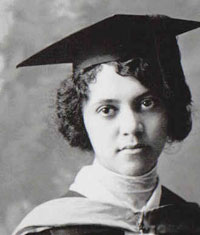
Alice Augusta Ball (July 24, 1892 – December 31, 1916) was an African American chemist who developed an injectable oil extract that was the most effective treatment of leprosy until the 1940’s. She was also the first woman and first African American to graduate from the University of Hawaii with a master’s degree.
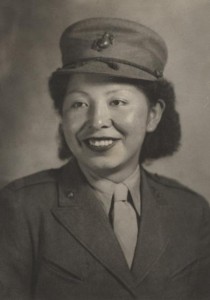
CLAIRE HARRIS
Claire Harris is a Canadian poet of Trinidadian background who has produced over eight collections of poems since her first volume, Fables from the Women’s Quarters (1984), which won the Commonwealth Award for Poetry for the Americas Region. Her 1992 volume, Drawing down a daughter was nominated for the Governor General’s Award for Poetry. Her Travelling to Find a Remedy won the Writers’ Guild of Alberta Poetry Award in 1987. Her work has been included in more than 70 anthologies and has been translated into German and Hindi.
Claire Harris was born (1937) in Trinidad, West Indies, studied at University College, Dublin where she earned a B. A. Honours in English (1961). At the University of the West Indies (Jamaica) she earned a Diploma in Education (1963). She came to Canada in 1966 and settled in Calgary where she taught English until 1994. In 1975, during a study leave in Nigeria, she first wrote for publication and was encouraged by Nigerian poet, J.P. Clark. She also earned a Diploma in Communications from the University of Lagos, Nigeria (1975). After returning to Canada Claire Harris became active in the literary community in Calgary working as poetry editor at Dandelion from 1981-89 and helping to found the all-Alberta magazine, blue buffalo, in 1983. As an active member of the Writers’ Guild of Alberta she was a reader-judge for several literary awards.
Many of Harris’s poems deal with the problems of injustice whether it is in colonial or post-colonial regions or in violence against women. Even in, Drawing down a daughter, a collection of personal poems on friendship, love and motherhood there are many references to the condition of African-Canadians.
Claire Harris is one of Canada’s best and best-known poets. Her works have been translated into several languages including German and Hindi, and her reading tours have taken her to India, South America, the Caribbean, the US, the UK, and Europe as well as across Canada. A native of Trinidad, she taught English and drama in Calgary high schools for more than twenty-five years before becoming a full-time poet and poetry performer. She has won the Writer’s Guild of Alberta Award and the Alberta Poetry Prize several times. Fables from the Women’s Quarters won the 1984 Commonwealth Prize for Poetry, Americas Region; and Drawing Down a Daughter was a finalist for the 1992 Governor General’s Award and the F.G. Bressani Prize.
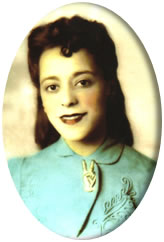
Viola (Davis) Desmond
Viola (Davis) Desmond was a Halifax Business Woman, Beautician, Teacher and Entrepreneur who Awakened Nova Scotia to Human Rights in 1946.
Viola Desmond
The Davis family played an active part of Halifax Black society and, being born into in that family in 1914, Viola saw something that Black women wanted and needed in Nova Scotia. She observed the lack of professional Hair and skin care for Blacks. That was an entrepreneurial opportunity gap that she determined to fill. To do this, she ventured to New York’s Lalia College which had grown out of Madam C.J. Walker’s beauty business. Viola understood Walker’s business model – Don’t just build a business, build an industry. Today we would recognize that as “vertical integration”.
Viola (Davis) Desmond plotted her personal path to success by
Gaining professional training that was not available at home
Developing her own line of specialized beauty products
Using her products in her own studio
Empowering other Black women to start beauty culture businesses
Selling her product through the businesses started by her students
By 1946 she was proving the value of her formula and business was good. The Desmond Studio of Beauty Culture and the Desmond School of Beauty Culture were going strong and her network was expanding as she built an industry with her graduates. She created a province-wide Black Beauty Culture industry.
Viola Desmond was a leader in many ways:
She was a living positive successful Role Model for Black Women
Her graduates learned to operate business
Young girls proudly admired her stylish sense of presence
At a time when few women owned and operated independent business, she was admired as being truly outstanding.
Her eager graduates began their own careers and joined the distribution network for Viola Desmond’s brand of beauty products.
So it was on November 8, 1946 that she was on the road delivering product to out of town studios. Car trouble forced her to have idle time in New Glasgow, Nova Scotia so she took in a movie. The Roseland Theater that she entered had a racist practice restricting Blacks to sit in the balcony. Viola sat down stairs and when asked to move refused to go to the balcony.
For that refusal, she was ejected from the theater, arrested by the New Glasgow police, locked over night in the New Glasgow jail, charged, found guilty and sentenced in the New Glasgow court. She was found guilty of defrauding the government of the 1 cent difference in the 3 cent tax in a downstairs ticket and the 2 cents tax in a balcony ticket. She paid the fine plus costs and left New Glasgow.
When she returned to Halifax, the newly formed Nova Scotia Association for the Advancement of Colored People encouraged her to fight to overturn that malicious conviction. Unfortunately, the appeal to the Supreme Court of Canada was unsuccessful. The 1946 conviction remained on her record.
Viola Desmond had been denied the protection that one expects from the police, the prosecutors, the judges and the courts. Eventually, she left her business, left Nova Scotia and left Canada. Her 1965 death occurred in New York City.
In 2010, sixty-four years after the fact, the government of Nova Scotia apologized to Viola Desmond’s remaining family and acknowledged the integrity, strength and bravery of her action defending human rights. In 2012, Canada Post issued a Canadian postage stamp commemorating her stand for justice.
For decades, Viola Desmond’s ordeal inspired the emergence of Human rights legislation and fair accommodation laws throughout Canada during the 1950s and 1960s. The loss of Viola as a dynamic business role model has denied generations of Black entrepreneurs of her inspiration in that field. Today Black Business entrepreneurs still feel frustration and resistance.
Canada celebrates her strength of character in defying social injustice in 1946 Nova Scotia. As Dr. Martin Luther King Junior wrote in 1963, “…injustice anywhere is a threat to justice everywhere”. For that, Viola (Davis) Desmond remains a role model and source of pride for African-Canadians.
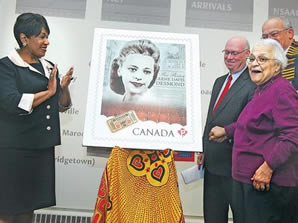
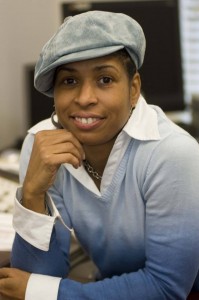
Born and raised in Brooklyn, N. Y., M.I.T graduate “Aprille Ericsson” was the first female (black or white) to receive a Ph.D. in mechanical engineering from Howard University and the first Black-American female to receive a Ph.D. in engineering at the ‘NASA Goddard Space Flight Center’.
In 1996 and 1997 she was acknowledged by the National Technical Association for being amongst the Top 50 minority women in Science and Engineering. In May of 1997 she received the Women in Science and Engineering award for being the best female in the Federal Government in 1998. In February of that year she received a Special Recognition Award at the Black Engineers Award Conference.

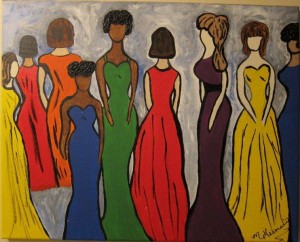
0 responses so far ↓
There are no comments yet...Kick things off by filling out the form below.
Leave a Comment